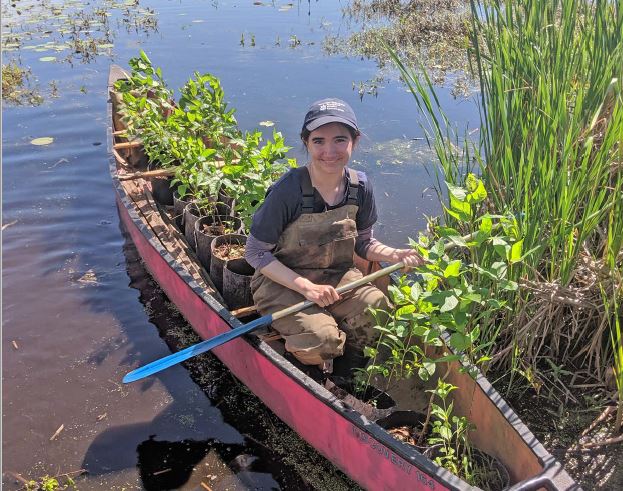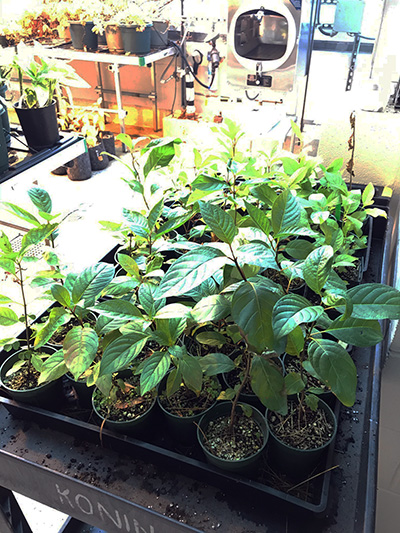- Apply
- Visit
- Request Info
- Give



Published on April 05, 2022

Bryan Connolly, botanist, horticulturalist and assistant professor of biology at Eastern Connecticut State University, recently had his research published in the peer-reviewed journal “Ecological Restoration.”
Connolly’s article, titled “Hemp Hulls Significantly Enhance Growth of the Native North American Shrub Cephalanthus Occidentalis (Buttonbush) Rubiaceae,” was written in collaboration with three fellow scientists—Bryan S. Windmiller and Cara L. McElroy of Zoo New England in Boston, MA, and Evan Prasky, a former undergraduate student at Framingham State University.
The team’s research, which focuses on Cephalanthus occidentalis, more commonly known as buttonbush—a shrub native to North America—follows the impact of hemp hulls on their growth. According to Connolly, buttonbush is important for many different species within the ecosystem, providing coverage for smaller animals—such as the Blanding’s turtle—in areas with large predator populations.

At Great Meadows NWR, Concord, MA, Regina Peters of Zoo New England sits amid a canoe full of juvenile Cephlanthus occidentalis (buttonbush) that are ready to be installed in Emydoidea blandingii (Blanding’s turtle) habitat. Connolly et al. tested whether commercially available hemp hulls could accelerate several growth parameters of buttonbush and decrease the time from greenhouse cultivation to outplanting in restoration sites. Photo credit: B. Windmiller
“I wanted to find a fertilizer to speed the growth of buttonbush to use in Blanding’s turtle habitat restoration,” explained Connolly. “I also thought as hemp production increases in the United States that byproducts or waste products may need to have new uses found for them. We found that hemp hulls were an effective soil additive that significantly increased the growth of buttonbush so that they could be used sooner for habitat restoration.”

Connolly has dedicated his time and knowledge to several biological research interests, including endangered plant species, flora of New England, cannabis and horticulture. Connolly also works with his students to incorporate his research into their studies.
“I have done two independent studies with students on hemp hulls, and students have presented their results as posters for the online CREATE conference in spring of 2021. I also have had students do individual projects on hemp hulls in my plant physiology class.”
Connolly plans to continue with this research. “I would like to explore how other plant species react to hemp hulls as fertilizer. Additionally, my students and I have been investigating the use of hemp hulls to slow down weed germination.”
Written by Molly Boucher